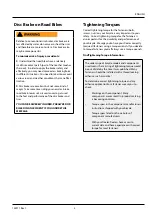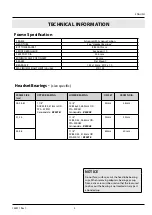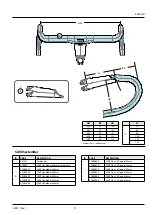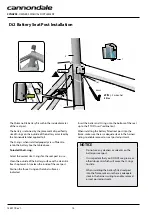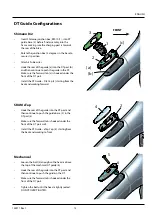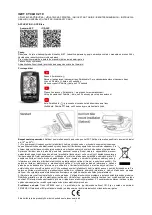
3
134911 Rev 1.
ENGLISH
Disc Brake on Road Bikes
Relative to conventional rim brakes, disc brakes are
less affected by water, do not wear or heat the rims
and therefore are more consistent. Disc brakes also
may be more powerful.
To minimize risk of injury or accidents:
■ Understand that road bikes have a relatively
small tire contact patch (part of the tire that touches
the road). In order to apply the brakes safely and
effectively, you may need more or less braking force
in different situations. You need to take into account
various road and weather conditions that can affect
traction.
■ Disc brakes are excellent, but not some kind of
magic. Take some time riding your new disc brake
road bike in lower risk circumstances to get used
to the feel and performance of the disc brakes and
tires.
YOU CAN BE SEVERELY INJURED, PARALYZED OR
KILLED IN AN ACCIDENT IF YOU IGNORE THIS
MESSAGE.
Tightening Torques
Correct tightening torque for the fasteners (bolts,
screws, nuts) on your bicycle is very important to your
safety. Correct tightening torque for the fasteners is
also important for the durability and performance of
your bicycle. We urge you to have your Dealer correctly
torque all fasteners using a torque wrench. If you decide
to torque fasteners yourself always use a torque wrench.
Find Tightening Torque Information :
The wide range of bicycle models and components
used means that a listing of tightening torque would
be out of date by the time it was published. Many
fasteners should be installed with a thread locking
adhesive such as Loctite®.
To determine correct tightening torque and any
adhesive application for a fastener we ask you to
check:
•
Markings on the component. Many
components are marked. On-product marking
is becoming common.
•
Torque specs in the component manufacturers
instructions shipped with your bicycle.
•
Torque specs listed on the websites of
component manufacturers.
•
With your Dealer. Dealers have access to
current data and have experience with correct
torque for most fasteners.





